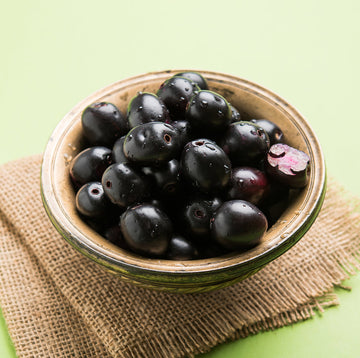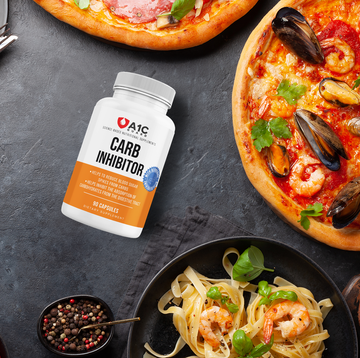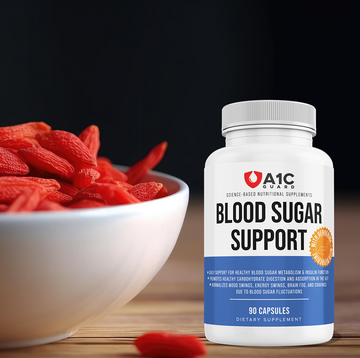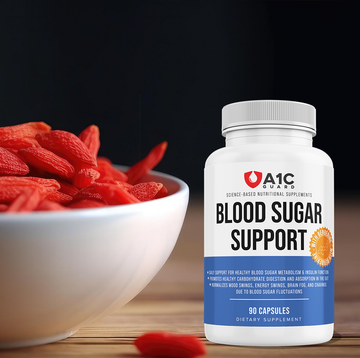Antidiabetic effects of Momordica charantia (bitter melon) and its medicinal potency
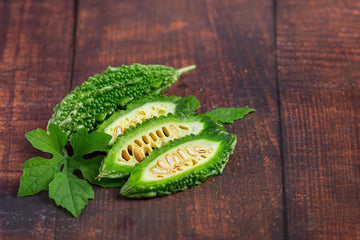
Abstract
Diabetes mellitus is among the most common disorder in developed and developing countries, and the disease is increasing rapidly in most parts of the world. It has been estimated that up to one-third of patients with diabetes mellitus use some form of complementary and alternative medicine. One plant that has received the most attention for its anti-diabetic properties is bitter melon, Momordica charantia (M. charantia), commonly referred to as bitter gourd, karela and balsam pear. Its fruit is also used for the treatment of diabetes and related conditions amongst the indigenous populations of Asia, South America, India and East Africa. Abundant pre-clinical studies have documented in the anti-diabetic and hypoglycaemic effects of M. charantia through various postulated mechanisms. However, clinical trial data with human subjects are limited and flawed by poor study design and low statistical power. The present review is an attempt to highlight the antidiabetic activity as well as phytochemical and pharmacological reports on M. charantia and calls for better-designed clinical trials to further elucidate its possible therapeutic effects on diabetes.
Diabetes mellitus is considered as one of the five leading causes of death in the
world[1]. Diabetes mellitus is a major global health concerning with a projected rise in prevalence from 171 million in 2000 to 366 million in 2030[2]. It is a syndrome of disordered metabolism, usually due to a combination of hereditary and environmental causes, resulting in abnormally high blood sugar levels (hyperglycemia)[3]. Being a major degenerative disease, diabetes is found in all parts of the world and it is becoming the third most lethal disease of mankind and increasing rapidly[4]. It is the most common endocrine disorder, affecting 16 million individuals in the United States and as many as 200 million individuals worldwide. Diabetes has been a clinical model for general medicine[5]. Complementary and alternative medicine involves the use of herbs and other dietary supplements as alternatives to mainstream western medical treatment. A recent study has estimated that up to 30% of patients with diabetes mellitus use complementary and alternative medicine[6].
Medicinal plants and its products continue to be an important therapeutic aid for alleviating the ailments of human kind[7]–[9]. Herbs for diabetes treatment are not new. Since ancient times, plants and plant extracts were used to combat diabetes. Many traditional medicines in use are derived from medicinal plants, minerals and organic matter. The World Health Organization (WHO) has listed 21 000 plants, which are used for medicinal purposes around the world. Among them, 150 species are used commercially on a fairly large scale[1],[10].
Momordica charantia (M. charantia), also known as bitter melon, karela, balsam pear, or bitter gourd, is a popular plant used for the treating of diabetes-related conditions amongst the indigenous populations of Asia, South America, India, the Caribbean and East Africa[11],[12]. Its fruit has a distinguishing bitter taste, which is more pronounced as it ripens, hence the name bitter melon or bitter gourd. Biochemical and animal model experiments have produced abundant data and hypotheses accounting for the anti-diabetic effects of M. charantia. In comparison, clinical studies with human subjects are sparse and low quality in design.
Diabetes mellitus is well known clinical entity with various late complications like retinopathy, neuropathy, nephropathy, etc. Natural products are known to play an important role in pharmaceutical biology[13]. Specific plant knowledge may provide insight for strategic consumption and sustainable use. The alternate medicine system is now gaining momentum with the knowledge of active principles identified from plant species[14]. M. charantia has significant antidiabetic as well as hypolipidemic activity so that it can be used as an adjuvant along with allopathic treatment of medicine to treat diabetes as well as to delay the late complications of diabetes. In the present review, we have elucidated the possible antidiabetic activity of M. charantia and its medicinal potency responsible for the hypoglycemic activity.
2. Plant-based anti-diabetic medicine
Plant-based medicine has been used cost-effectively worldwide to treat diabetes. In fact, in many parts of the world, especially poor countries, this may be the only form of therapy available to treat diabetic patients. There are several reviews by different authors about anti-diabetic herbal plants[1],[14]–[17]. Ayurveda and other traditional medicinal systems for the treatment of diabetes describe a number of plants used as herbal drugs. Hence, they play an important role as alternative medicine due to less side effects and low cost. The active principles present in medicinal plants have been reported to possess pancreatic β cells regenerating, insulin releasing and fighting the problem of insulin resistance[18]. Hyperglycemia is involved in the etiology of development of diabetic complications. Hypoglycemic herbs increase insulin secretion, enhance glucose uptake by adipose or muscle tissues and inhibit glucose absorption from intestine and glucose production from liver[19]. Insulin and oral hypoglycemic agents like sulphonylureas and biguanides are still the major players in the management, but there is quest for the development of more effective anti-diabetic agents.
From the current literature, it is evident that M. charantia is the most widely used and popular anti-diabetic plant. Thus, this review will concentrate mainly on M. charantia and its anti diabetic properties.
3. The profile of M. charantia
3.1. Plant description
M. Charantia (bitter melon or bitter gourd) (Figure 1) is a flowering vine in the family Cucurbitaceae. It is a tropical plant that is widely cultivated in Asia, India, East Africa, and South America for its intensely bitter fruits that are commonly used in cooking and as a natural remedy for treating diabetes[20]. It is a climbing perennial that usually grows up to 5 m, and bears elongated fruits with a knobbly surface. It is a useful medicinal and vegetable plant for human health and one of the most promising plants for diabetes[21].

3.2. Nutrient profile
Bitter melon is a powerful nutrient-dense plant composed of a complex array of beneficial compounds. These include bioactive chemicals, vitamins, minerals and antioxidants which all contribute to its remarkable versatility in treating a wide range of illnesses. The fruits contain high amounts of vitamin C, vitamin A, vitamin E, vitamins B1, B2 and B3, as well as vitamin B9 (folate). The caloric values for leaf, fruit and seed were 213.26, 241.66 and 176.61 Kcal/100 g respectively[22].
The fruit is also rich in minerals including potassium, calcium, zinc, magnesium, phosphorus and iron, and is a good source of dietary fiber (bitter melon “monograph”, 2008). Medicinal value of bitter melon has been attributed to its high antioxidant properties due in part to phenols, flavonoids, isoflavones, terpenes, anthroquinones, and glucosinolates, all of which confer a bitter taste[23].
3.3. Phytochemistry
The main constituents of bitter melon which are responsible for the antidiabetic effects are triterpene, proteid, steroid, alkaloid, inorganic, lipid, and phenolic compounds[24],[25]. Several glycosides have been isolated from the M. charantia stem and fruit and are grouped under the genera of cucurbitane-type triterpenoids[26],[27]. In particular, four triterpenoids have AMP-activated protein kinase activity which is a plausible hypoglycaemic mechanism of M. charantia[27].
M. charantia fruits consist glycosides, saponins, alkaloids, reducing sugars, resins, phenolic constituents, fixed oil and free acids[28]. M. charantia consists the following chemical constituents including alkaloids, charantin, charine, cryptoxanthin, cucurbitins, cucurbitacins, cucurbitanes, cycloartenols, diosgenin, elaeostearic acids, erythrodiol, galacturonic acids, gentisic acid, goyaglycosides, goyasaponins, guanylate cyclase inhibitors, gypsogenin, hydroxytryptamines, karounidiols, lanosterol, lauric acid, linoleic acid, linolenic acid, momorcharasides, momorcharins, momordenol, momordicilin, momordicin, momordicinin, momordicosides, momordin, momordolo, multiflorenol, myristic acid, nerolidol, oleanolic acid, oleic acid, oxalic acid, pentadecans, peptides, petroselinic acid, polypeptides, proteins, ribosome-inactivating proteins, rosmarinic acid, rubixanthin, spinasterol, steroidal glycosides, stigmasta-diols, stigmasterol, taraxerol, trehalose, trypsin inhibitors, uracil, vacine, v-insulin, verbascoside, vicine, zeatin, zeatin riboside, zeaxanthin, zeinoxanthin amino acids-aspartic acid, serine, glutamic acid, thscinne, alanine, g-amino butyric acid and pipecolic acid, ascorbigen, b-sitosterol-d-glucoside, citrulline, elasterol, flavochrome, lutein, lycopene, pipecolic acid. The fruit pulp has soluble pectin but no free pectic acid. Research has found that the leaves are nutritious sources of calcium, magnesium, potassium, phosphorus and iron; both the edible fruit and the leaves are great sources of the B vitamins[29].
3.4. Bioactive compounds
Based on the multitude of medical conditions that bitter melon can treat, scientists are more and more interested in studying its bioactive compounds and their actions on the body. However, as many studies report, there has been substantial emphasis on the anti-diabetic compounds and their hypoglycemic properties[30],[31]. A number of reported clinical studies have shown that bitter melon extract from the fruit, seeds, and leaves contain several bioactive compounds that have hypoglycemic activity in both diabetic animals and humans[32],[33].
Momordicine II and 3-hydroxycucurbita-5, 24-dien-19-al-7, 23- di-O-β-glucopyranoside (4), were isolated as saponins from M. charantia. Both compounds showed significant insulin releasing activity in MIN6 β-cells at concentration of 10 and 25 µg/mL[34]. The major compounds that have been isolated from bitter melon and identified as hypoglycemic agents include charantin, polypeptide-p and vicine.
3.4.1. Charantin
Charantin is a typical cucurbitane-type triterpenoid in M. charantia and is a potential substance with antidiabetic properties[35],[36]. Pitiphanpong et al. demonstrated that charantin could be used to treat diabetes and can potentially replace treatment[37]. It is a mixture of two compounds, namely, sitosteryl glucoside and stigmasteryl glucoside[37]. Chen et al. isolated 14 cucurbitane triterpenoids, kuguacins, including two pentanorcucurbitacins, one octanorcucurbitacin, and two trinorcucurbitacins, along with six known analogues from the vines and leaves of M. charantia[38]. The charantin from bitter melon fruit was extracted and estimated by high performance thin layer chromatographic method[39].
Studies have reported that the compound is more effective than the oral hypoglycemic agent tolbutamide[12]. In a study, two aglycones of charantin were isolated and identified as sitosterol and stigmastadienol glycosides, however, when tested separately for their hypoglycemic effects in vivo, these two constituents did not produce any notable changes in blood glucose levels[40]. This is an indication that charantin may contain other specific components, yet to be identified, that are responsible for the hypoglycemic activity observed in diabetics.
3.4.2. Polypeptide-p
Bitter melon is one of the most commonly used vegetable that contains polypeptide-p and is used to control diabetes naturally[41]. Polypeptide-p or p-insulin is an insulin-like hypoglycemic protein, shown to lower blood glucose levels in gerbils, langurs and humans when injected subcutaneously[42]. The p-insulin works by mimicking the action of human insulin in the body and thus may be used as plant-based insulin replacement in patients with type-1 diabetes[43]. Recently, Wang et al. have cloned and expressed the 498 bp gene sequence coding for the M. charantia polypeptide p gene and have also proved the hypoglycemic effect of the recombinant polypeptide in alloxan induced diabetic mice[44]. The oral intake of the extract from bitter melon seeds does produce hypoglycemic effects in streptozotocin (STZ) induced type-1 diabetic rats[32]. This indicates that compounds in bitter melon seeds other than p-insulin may also be effective in the treatment of type-1 diabetes.
3.4.3. Vicine
The other major compound that has been isolated from the seeds of bitter melon is a glycol alkaloid known as vicine[45]. This pyrimidine nucleoside has been shown to induce hypoglycemia in non-diabetic fasting rats by intraperitoneal administration[46]. However, vicine found in fava bean has been shown to induce favism, an acute disease characterized by hemolytic anemia, in individuals with a hereditary loss of the enzyme glucose-6-phosphatedehydrogenase[47]. Although there have been no reports on favism induced by bitter melon, individuals susceptible to the disease should avoid eating the fruit. Further studies are required to ensure the safety and efficacy of using vicine to treat hyperglycemia.
3.4.4. Other components
Many other bitter melon constituents have been identified and isolated by various extraction techniques. The first study to show the in vivo hypoglycemic activity of the major compounds of bitter melon was done by a group of Japanese scientists. They isolated 11 compounds by fractionation of a methanol extract from dried bitter melon fruits. The structure of three cucurbitane triterpenoids were determined, as well as two other major compounds that were tested and shown to significantly lower blood glucose levels in diabetic mice[21]. Four compounds that may be responsible for the bitter taste of the plant were isolated and identified as momordicosides K and L, and momordicines I and II. The last two compounds isolated were identified as sitosterol and stigmastadienol, the aglycones of charantin[40].
4. Medicinal properties of M. charantia
Bitter melon is traditionally known for its medicinal properties such as antidiabetic, anticancer, anti-inflammation, antivirus, and cholesterol lowering effects. It contains many phenolic compounds that may have the potential as antioxidant and antimutagen[25],[48]. The fruit, stems, leaves and roots of bitter melon have all been used in traditional medicine to help treat ailments such as hyperlipidemia, digestive disorders, microbial infections and menstrual problems[49]. Bitter melon has been shown to possess powerful antiviral properties that can stimulate the immune system and activate the body's natural killer cells to help fight off viruses such as white spot syndrome virus and human immunodeficiency virus[50]–[52]. Studies have also shown that bitter melon has anti-carcinogenic properties and can be used as a cytotoxic agent against many types of cancer[53]. Ray et al. showed that the extract of bitter melon modulates signal transduction pathways for inhibition of breast cancer cell growth and can be used as a dietary supplement for prevention of breast cancer[54].
Bitter melon extract can also be used as a broad-spectrum antibacterial agent to fight off infections caused by Escherichia coli, Salmonella, Staphylococcus aureus, Staphylococcus, Pseudomonas, and Streptobaccilus[55]. In addition, the plant possesses anti-helmintic properties, which are effective in the treatment of malaria. Traditionally, bitter melon has also been used as an abortifacient agent used to induce abortions. Therefore, pregnant women are advised to avoid consumption of the plant[50]. The extract of the seed also have antispermatogenic effect[56].
5. Anti-diabetic effect of M. charantia
There are many traditional herbal remedies that have been used to treat diabetes in Asia and other developing countries[16],[57]–[59]. M. charantia is one of the plants that has been investigated thoroughly for the treatment of diabetes[60]. With the traditional use supported by modern scientific evidence of the beneficial function of M. charantia, it is one of the most promising plants for diabetes today[11],[61]. Investigation of the traditional uses of M. charantia in India revealed that it is one of the most important plant for lowering blood glucose levels in patients with diabetes[43].
5.1. Possible modes of action of M. charantia and its extract
M. charantia and its various extracts and components are believed to exert their hypoglycemic effects via different physiological, pharmacological and biochemical modes[62]–[64]. The possible modes of the hypoglycemic actions of M. charantia and its various extracts and compounds are its hypoglycemic effect[67],[70], stimulation of peripheral and skeletal muscle glucose utilisation[71],[72], inhibition of intestinal glucose uptake[73]–[75], inhibition of adipocyte differentiation[76], suppression of key gluconeogenic enzymes[77],[78], stimulation of key enzyme of HMP pathway[77], and preservation of islet β cells and their functions[66]. Today, over 140 different studies worldwide have investigated anti-hyperglycemic and hypoglycemic effects of the different extracts and ingredients of M. charantia in both human and animal models[32],[33],[62].
According to Kim and Kim, M. charantia extract suppressed the activation of mitogen-activated protein kinases (MAPKs) including stress-activated protein kinase/c-Jun N-terminal kinase (SAPK/JNK), p38, and p44/42, and the activity of NF-κB[65]. The findings suggest that M. charantia protects pancreatic β-cells through down-regulation of MAPKs and NF-κB in MIN6N8 cells. A similar study suggest that M. charantia improves the serum and liver lipid profiles and serum glucose levels by modulating PPAR-γ gene expression[66]. According to Ragasa et al., clerosterol and 5α-stigmasta-7-en-3β-ol were isolated as sterols from M. charantia having significant hypoglycemic effects[67]. M. charantia was identified to possess a potent neuroprotective activity against global cerebral ischemia-reperfusion induced neuronal injury and consequent neurological deficits in diabetic mice[68]. Protein tyrosine phosphatase 1B (PTP1B), a negative regulator of insulin signaling, has served as a potential drug target for the treatment of type 2 diabetes[69].
M. charantia, its extracts and isolated components are believed to exert their hypoglycaemic effects via different physiological and biochemical processes. These include insulin secretagogue like effect, stimulation of skeletal muscle and peripheral cell glucose utilization, inhibition of intestinal glucose uptake, inhibition of adipocyte differentiation, suppression of key gluconeogenic enzymes, stimulation of key enzymes, HMP pathway and preservation of pancreatic islet cells and their functions.
5.2. Preservation of pancreatic β cells and insulin secretion
It was previously demonstrated by Jeewathayaparan et al. that oral administration of M. charantia could lead to the secretion of insulin from endocrine pancreatic β cells[79]. This observation was further confirmed by Ahmed et al. who investigated the effect of daily oral administration of M. charantia fruit juice and the distribution of α, β and δ cells in the pancreas of STZ-induced diabetic rats using immunohistochemical methods[80]. The feeding of alcoholic extract from M. charantia showed definite improvement in the islets of Langerhans[81].
Physiological experiments have also shown that M. charantia can stimulate insulin secretion from the endocrine pancreas and elicit glucose uptake in the liver[74]. Current evidence therefore indicates that the recovery and subsequent increase in the number of insulin producing cells followed by the release of insulin may be part of the several pathways by which M. charantia exerts its hypoglycemic effects. In addition to the properties mentioned above, M. charantia and its extracts may possess cell-like proliferation and growth-like properties similar to that of insulin[82]. Nevertheless, further experiment are required, at least at the molecular level, to determine the precise mechanisms whereby M. charantia can either repair damaged β cells or prevent their death.
5.3. M. charantia and glucose metabolism
Insulin plays a major biochemical role in stimulating the uptake of glucose by different cells of the body for the production of energy[83],[84]. Since M. charantia and its various extracts and components have been reported to exert hypoglycemic effects, and then it is important to understand whether M. charantia may have a direct effect in inducing a reduction in blood glucose level[62]. Previous studies have shown that both the aqueous and alcoholic extracts of the fruit of M. charantia can inhibit the activities of fructose 1, 6-diphosphatase and glucose-6-phosphatase and at the same time stimulating the action of glucose-6-phosphatase dehydrogenase[85]. It was previously reported that M. charantia and its various extracts can stimulate peripheral cell glucose uptake[71],[72]. A number of studies have investigated the effect of the powder and chloroform extract of M. charantia in comparison with insulin on glucose and amino acid uptakes by skeletal L6 myotubes and Na+ and K+ glucose uptakes by jejunum brush border membrane vesicles in both age-matched control and STZ-induced diabetic rats. The results show that either the lyophilized fruit juice or chloroform extract at 5-10 µg/mL can stimulate 3H-deoxyglucose and 14C-Me AIB (N-methyl-amino-α-isobutyric acid) uptakes by L6 myotubes. These effects were similar in magnitude to the effects obtained with 100 nmol/L insulin. Incubation of either insulin or M. charantia juice in the presence of wortmannin (a phosphatidylinositol 3-kinase inhibitor) resulted in a marked inhibition of 3H-deoxyglucose uptake by L-6 myotubes[71]. Together, the results have clearly demonstrated that M. charantia contains insulin like properties, similar to one phytochemical component of M. charantia called V-insulin[62].
In addition to its insulin-like effects on skeletal muscle cells, daily oral intake of M. charantia fruit juice over a period of 10 weeks significantly reduced the amount of Na+ and K+-dependent 14C-D-glucose absorbed by rat jejunum brush border membrane vesicle compared to vesicles obtained from STZ-induced diabetic rats[80]. Taken together, these results clearly demonstrated that M. charantia and its extracts can directly regulate blood glucose via two mechanisms. Firstly, it can regulate how much glucose is absorbed by the gut into the blood following a meal and secondly, it can stimulate glucose uptake into skeletal muscle cells just like insulin. Moreover, it seems to exert its effect via the same intracellular signaling pathways as insulin in regulating glucose metabolism in the body[86].
5.4. Animal studies of M. charantia
Various animal studies have repeatedly shown hypoglycaemic effects of the seeds, fruit pulp, leaves and whole plant of M. charantia in normal animals[74],[87],[88]. In particular, M. charantia improves glucose tolerance and suppresses postprandial hyperglycaemia in rats[71],[75],[73], and M. charantia extract can enhance insulin sensitivity and lipolysis[89],[90]. Some studies also claimed that the hypoglycaemic effect of M. charantia was comparable with oral medications such as tolbutamide[70],[91], chlorpropamide and glibenclamide[92],[93]. Abundant biochemical data have shed light upon possible mechanisms of the anti-diabetic actions of M. charantia with the recurring theme being activation of the AMP-activated protein kinase system[94]–[97]. Other studies suggested a role of the a- and g-peroxisome proliferator-activated receptors (PPARa and PPARg) which are pivotal in lipid and glucose haemostasis and may mitigate insulin resistance[98],[99].
The alcoholic extract of M. charantia was quite effective in lowering blood sugar levels and islet histopathology also showed improvement. The lowered blood sugar and improvement in islet histology remained as such even after discontinuation of extract feeding for 15 days[81]. The acetone extract of whole fruit powder of M. charantia in doses 0.25, 0.50 and 0.75 mg/kg body weight lowered the blood glucose from 13.3% to 50.0% after 8 to 30-day treatment in alloxan diabetic albino rats, confirming anti hyperglycemic effect of this plant in diabetic animals and humans[100].
5.5. Clinical studies of M. charantia
More than 1 000 herbal products have been used by diverse cultures of the world to treat hyperglycemia and among them bitter melon (M. charantia) is one of the most popular herbal resource[101]. An earlier study on the development of diabetic cataracts demonstrated that blood sugar level-dependent cataract formation was slowed down by the consumption of bitter gourd fruit extract in association with better glucose homeostasis[102]. Today, processed bitter gourd in the form of capsules or tablets is commonly advertised and sold. The products are marketed under the brand names Gourdin, Karela, and Glucobetic in Canada, India, the United Kingdom, the United States, and many Asian countries. Products can also be ordered online. However, Diabetes UK has released a warning with regard to the use of Karela capsules, because it is not yet known what dose is safe when taken with other antidiabetic agents, and there is a lack of information on other potential bioactive components of the capsules[103].
Compared with animal studies, clinical studies regarding the hypoglycaemic effects of M. charantia have been sparse and sporadic. Lakholia, a physician, was probably the first to document the therapeutic effect of bitter melon in 1956 using himself as the subject[104]. As we reviewed in the recent studies fulfilling our search criteria, we noticed that the majority of them lacked proper controls or suffered from poor methodologies without baseline characterizations as tabulated in Table 1.
Table 1
| Study design | Subjects | Form of M. charantia administered | Treatmentduration | Outcome measures | Statisticalsignificance | Reference |
| Open-label uncontrolled supplementation trial | 42 individuals | 4.8 g lyophilized wild type bitter gourd powder in capsules | 3 months | MetS risk factors | Yes | [105] |
| Random design | 26 subjects | Tablets | 4 weeks | fructosamine assays | Yes | [60] |
| Multicenter, randomized, double-blind,active-control trial | 4 groups | Capsule contained 500 mg of dried powder of the fruit pulp, containing 0.04-0.05% (w/w) of charantin | 4 weeks | Fructose amine | Yes | [32] |
| Double-blind randomized controlled trial | 40 with T2D (twenty trial and twenty control subjects) | Commercial herbal supplement capsules | 3 months | HbA1c | No | [106] |
| Controlled trial | 15 with T2D in 3 groups | Methanol extract of ground whole fruit | 1 week | Fasting + postprandial blood glucose | Yes | [107] |
| Randomized controlled trial | 50 with T2D (26 trial and 24 control subjects) | Tablets from dried whole fruit | 4 weeks | (1) Fasting postprandial blood Glucose (2) Fructose amine | No | [108] |
| Case series | 100 with T2D | Fresh fruit | Singletreatment | (1) Fasting glucose(2) 2 h post OGTT | Yes | [109] |
| Case series | 12 with impaired OGTT | Arm 1: dried fruitArm 2: aqueous extract | 3-7 weeks | Arm1: postprandial blood glucose Arm2: postprandial blood sugar þ HbA1c | Arm 1: NoArm 2: Yes | [110] |
| Case series | 14 with T2D and 6 with T1D | Seeds | Singletreatment | Postprandial blood glucose | Yes | [111] |
| Case series | 18 with DM | Juice from seedless fruits | Singletreatment | OGTT | Yes | [112] |
| Case series | 8 with DM | Powdered dried fruit | 1 week | (1) Fasting glucose level (2)Glycosuria (3) OGTT | Yes | [113] |
| Case series | 9 T2D | Fresh fruit juice + fried fruit | Single treatment, then 7-11 weeks | (1) OGTT (2) HbA1c | (1) Yes (with juice)No (with fried fruit) (2) Yes (with fried fruit) | [114] |
| Case series | 19 with DM | ‘Polypeptide-p’ isolated from M. charantia | Single treatment | Blood glucose | Yes | [115] |
| Controlled trial | Trial subjects: 9 DM Control subjects: 5 DM + 5 normal | Aqueous extract refined to subcutaneous injection (v- insulin) | Single treatment | Blood glucose | Yes | [116] |
| Case series | 15 with DM | Fresh fruit juice and dried powder | 6-14 weeks | OGTT | No | [117] |
6. Conclusion
The concept of food as medicine is a central theme in dietetic and nutritional sciences. M. charantia has been used as dietary supplements and ethnomedicine throughout centuries for relieving symptoms and conditions related to what we know in modern days as diabetes. To date, M. charantia has been extensively studied worldwide for its medicinal properties to treat a number of diseases[61]. It is described as a versatile plant worthy of treating almost any disease inflicted on mankind. This may be due to the fact that the plant possesses over 225 different medicinal constituents[62]. These different compounds may act either separately or together to exert their medicinal effects. In relation to diabetes, only charantin, insulin-like peptide and alkaloid-like extracts possess hypoglycemic properties similar to the plant itself or its crude extracts. These different compounds seem to exert their beneficial effects via several mechanisms to control and treat diabetes mellitus.
Despite the abundant data from biochemical and animal studies, available clinical data as reviewed in the present article are often flawed by small sample size, lack of control and poor study designs. The present review supports the need for better-designed clinical trials with sufficient sample size and statistical power to further indicate the acclaimed efficacy of M. charantia as a natural nutritional treatment for diabetes mellitus. In particular, M. charantia may be a feasible option for ethnic minorities who have a high prevalence of diabetes but prefer treatment based on natural products according to their cultural beliefs.
Acknowledgments
The authors gratefully acknowledged to our Malankara Catholic College Correspondent Fr. Prem Kumar (M.S.W) given encouragement and support for preparation of this manuscript. We wish to express our sincere thanks to Mr. K. Suresh (Dept. of Microbiology), Dr. Sujatha (ICBM) and the research scholars in the Interdisciplinary Research Centre for updated article collection and all the efficient supports of this review preparation. This work was financially supported by CSIR, Head HRDG, New Delhi (Grant No. 27/0237/10 EMR II).
Background
Diabetes mellitus is one of the leading cause of death in the world. It is one of the major risk factor of cardiovascular disease. This review paper discussed the anti-diabetic effects of M. charantia and their medicinal aspects. Overall, the author covered most of the details pertaining to effect of blood glucose by the plant and highlights its usefulness in controlling blood glucose.
Research frontiers
This paper is a review based on various updates and published works related to hypoglycemic effects of Momordica charantia. The materials and methods doesn't confine to thie review paper.
Applications
It is not a original research paper but a review so it can be just said that M. charantia plays a very promising role in controlling blood glucose and there by controlling the risk factor towards CVD.
Peer review
This is a general review paper which has not authenticity. Over all it is a good compilation of previously published papers related to M. charantia as a medicinal plant in controlling the blood sugar. As such a lot is known by common mass, that M. charantia is beneficial towards controlling diabetes but this review article unveiled so many intricate details of the plant and its applied aspects in medicine.




